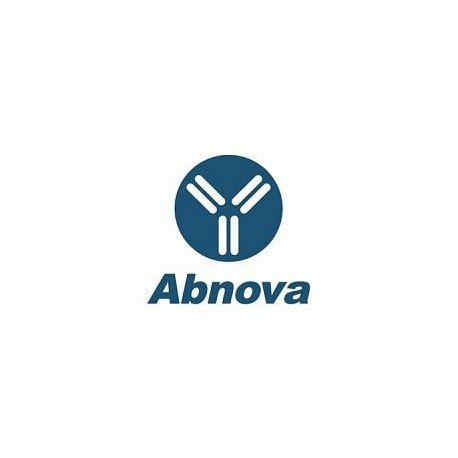Cart 0 Product Products (empty)
No products
To be determined Shipping
0,00 € Total
Prices are tax excluded
Product successfully added to your shopping cart
Quantity
Total
There are 0 items in your cart. There is 1 item in your cart.
Total products (tax excl.)
Total shipping (tax excl.) To be determined
Total (tax excl.)
Data sheet of LMNB1 polyclonal antibody
| Brand | Abnova |
| Product type | Primary antibodies |
| Reactivity | Human,Mouse,Rat |
| Host species | Rabbit |
| Applications | IHC-Fr,ICC,WB-Ti,IHC-P |
More info about LMNB1 polyclonal antibody
| Brand: | Abnova |
| Reference: | PAB12282 |
| Product name: | LMNB1 polyclonal antibody |
| Product description: | Rabbit polyclonal antibody raised against synthetic peptide of LMNB1. |
| Isotype: | IgG |
| Gene id: | 4001 |
| Gene name: | LMNB1 |
| Gene alias: | ADLD|LMN|LMN2|LMNB|MGC111419 |
| Gene description: | lamin B1 |
| Genbank accession: | BC012295 |
| Immunogen: | A synthetic peptide corresponding to amino acids at C-terminus of human LMNB1. |
| Protein accession: | AAH12295 |
| Form: | Lyophilized |
| Recommend dilutions: | Western Blot (1-2 ug/mL) Immunohistochemistry (Formalin/PFA-fixed paraffin-embedded sections) (0.5-1 ug/mL) Immunohistochemistry (Frozen sections) (0.5-1 ug/mL) Immunocytochemistry (0.5-1 ug/mL) The optimal working dilution should be determine |
| Storage buffer: | Lyophilized from 0.9 mg NaCl, 0.2 mg Na2HPO4 (5 mg BSA, 0.05 mg sodium azide, 0.05 mg Thimerosal) |
| Storage instruction: | Store at -20°C on dry atmosphere. After reconstitution with 200 uL of deionized water and concentration will be 500 ug/mL, store at -20°C or lower. Aliquot to avoid repeated freezing and thawing. |
| Note: | This product contains sodium azide and thimerosal: POISONOUS AND HAZARDOUS SUBSTANCE which should be handled by trained staff only. |
| Product type: | Primary antibodies |
| Host species: | Rabbit |
| Antigen species / target species: | Human |
| Specificity: | Different from the related rat and mouse sequence by three amino acids. |
| Reactivity: | Human,Mouse,Rat |
| Application image: |  |
| Application image note: | Immunohistochemical staining of LMNB1 on formalin fixed, paraffin embedded human mammary cancer with LMNB1 polyclonal antibody (Cat # PAB12282). |
| Applications: | IHC-Fr,ICC,WB-Ti,IHC-P |
| Shipping condition: | Dry Ice |
| Publications: | In vitro posttranslational modification of lamin B cloned from a human T-cell line.Pollard KM, Chan EK, Grant BJ, Sullivan KF, Tan EM, Glass CA. Mol Cell Biol. 1990 May;10(5):2164-75. |


